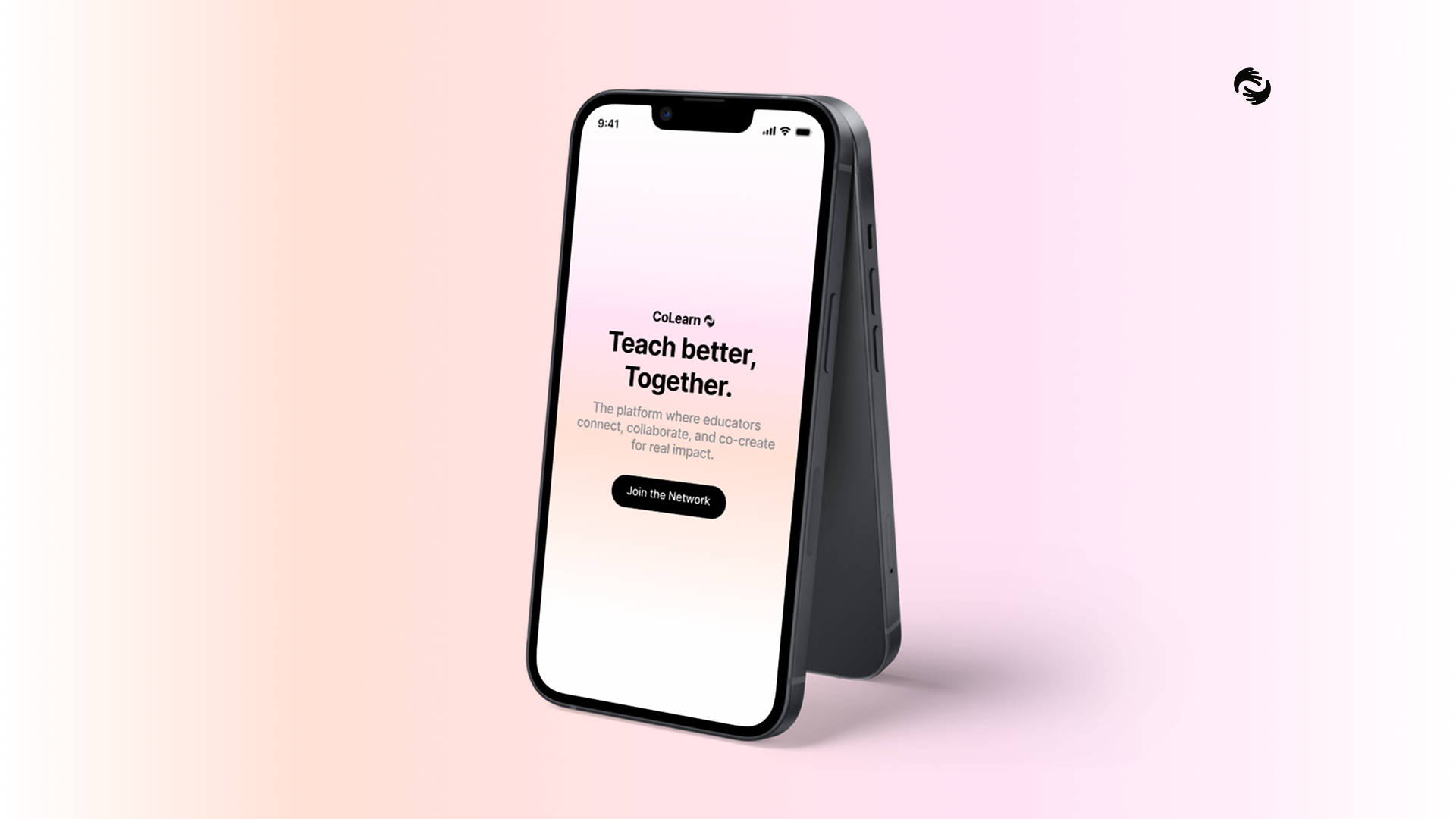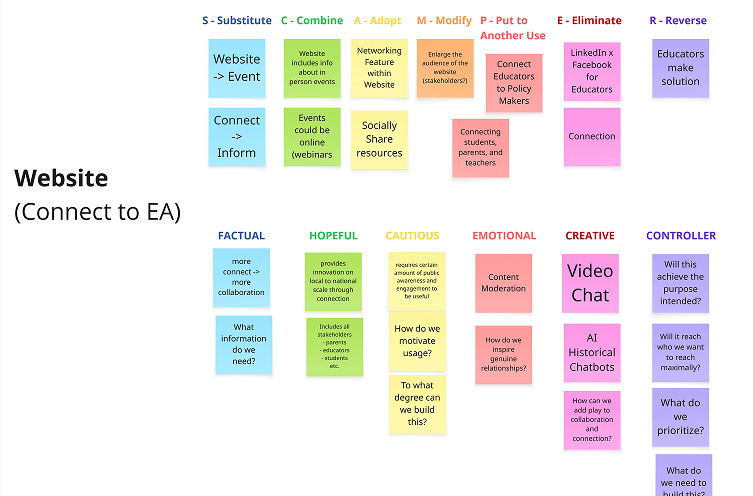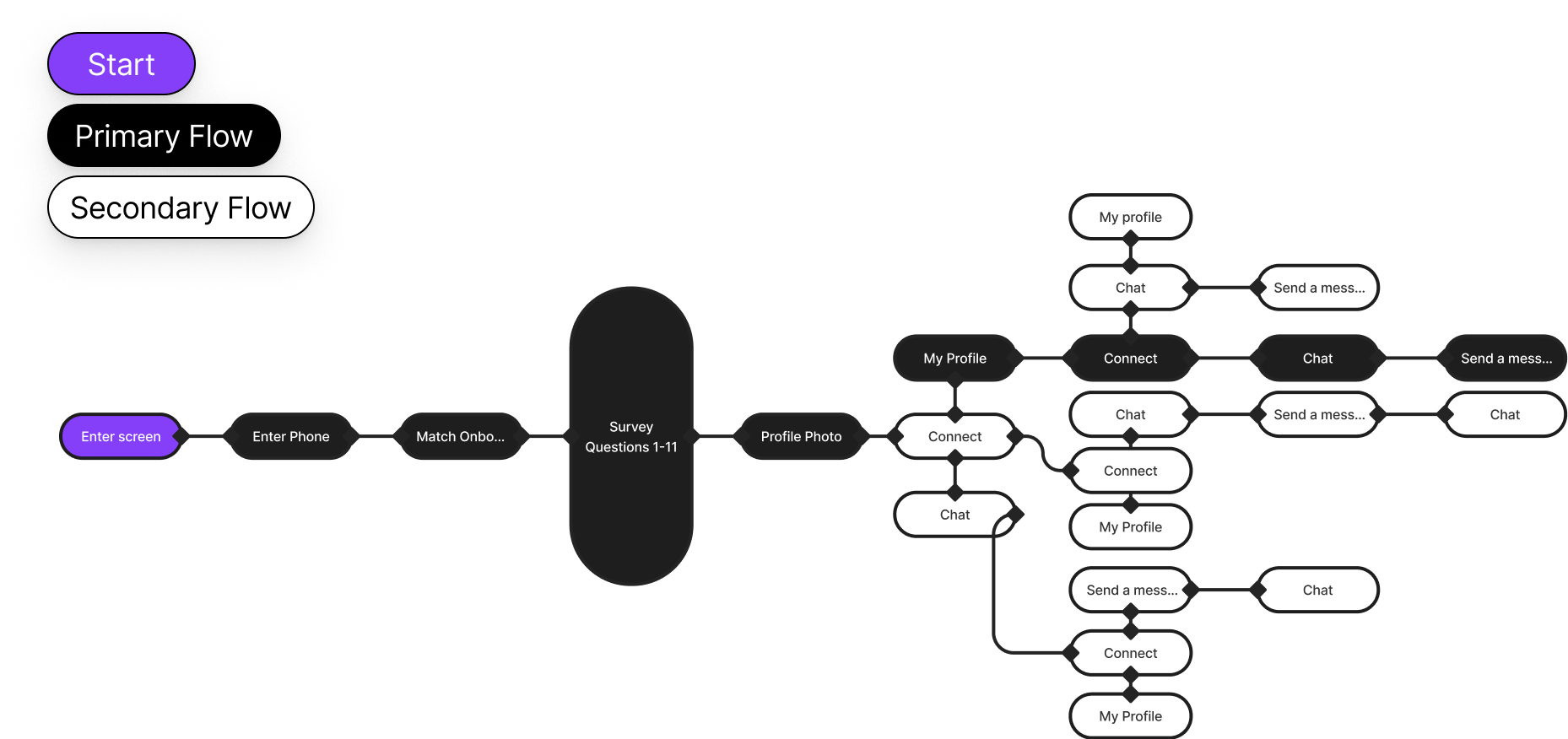CoLearn
This project was completed as a part of my role as a Junior Designer at the UC San Diego Design Lab. The Junior Designer program gives undergraduate students hands-on experience applying design tools, methods, and mindsets in meaningful, real-world settings. Participants build creative confidence and design fluency to lead and support innovation in business, government, and social impact work.
What Was This Project About?
We wanted to explore how San Diego schools could do a better job of teaching creativity, problem-solving, and real-world skills—things that actually matter in life beyond the classroom. Our team worked with a group of passionate teachers, administrators, and consultants called the Educator’s Alliance, who believe education should be more than just tests and grades.
Team
4 UX Designers & Researchers
Timeline
Jan 2025 - Jun 2025
Skills
UX Research, Prototyping, & Visual Design
Deliverables
Synthesized research findings, concept deck, sample screens
The Problem
Teachers feel isolated—even those eager to experiment lack support systems to share and test new ideas.
The system isn’t meeting students’ needs either: Students expressed that much of what they’re learning feels irrelevant and lacks focus on real-world skills like financial literacy, career prep, and college readiness.
There’s mutual empathy between students and teachers: Despite their frustrations, students recognized that teachers face systemic constraints that limit how innovative or personalized their curriculum can be.
But how did we get here?
01
Research
Research
We interviewed stakeholders to get a better understanding of the problem space
Received 31 responses to a survey we sent out to members of the Educator’s Alliance to better understand what they really want
Interviewed 6 teachers
Looked at articles and case studies about schools that are already trying new things
Synthesized findings in an affinity map
Takeaways
Education reform is highly political and difficult to change
Creativity is undervalued in education
Current curriculum does not prepare students to enter industry
🧑🏫 Teachers want to:
Be more creative in the classroom
Support students better, not just teach to a test
Try new ideas—but they often don’t have the tools, time, or support
🧑🎓 Students want:
Hands-on learning
Classes that feel useful for real jobs
Opportunities to be creative and take control of their education
02
Problem ➡︎ Root Cause ➡︎ “How Might We”
🚩 Problem
Educators are passionate about student success but believe that the traditional education system is failing to prepare them for future challenges.
🪵 Root Cause
Students are unprepared for industry, educators are not reforming the current curriculum, educators aren’t incentivized to reform current curriculum because of political hierarchy, teachers have limited autonomy, hard to implement changes large scale so it deters educators from making change.
🤔 How Might We?
How might we innovate to build a connected and cohesive educator community that is comprised of supportive relationships that enhance learning and well-being in an environment that is increasingly unfamiliar, while also building trust amongst co-creators in the ecosystem?
03
Ideation
We made sure to keep the core archetypes in mind as we came up with potential solutions:
🧑🎓 Students in San Diego - Creative, motivated, but frustrated by boring classes
🧑🏫 Teachers in San Diego - Passionate about students but blocked by the system
We used our “How Might We” statement and utilized various tools to ideate
Ideation Themes
Modular Toolkits – need quick, adaptable resources
Peer Networks – wish for community, and connection
Creative Workshops – improved professional development
Resource Hub – where else do you get the tools?
What Educators Really Need
Safe, trusted spaces for collaboration
Clear tools to deal with curriculum pressure
Lessons that actually matter to students’ futures
More time and access to team up and co-create
04
Solution
The Solution: CoLearn
CoLearn combines...
Peer networks & workshops
With shared toolkits & resources
through connection!
CoLearn seeks to create relational connections between educators that fit like a glove so that they have the opportunity to shake things up to a fuller degree. It’s like a social network + classroom lab + brainpower booster, just for educators. CoLearn isn’t just a tool, it’s an ecosystem for teacher-driven change.
User Flow
How CoLearn Helps 🤝
Purposeful AI Matching: The platform connects educators based on shared values, goals, and experience
Community Support: A space to give and get feedback, collaborate on projects, and feel part of something bigger.
Who Will Use It 📱
Teachers are at the heart of CoLearn.
Our research is clear: teachers are the key to reimagining education. CoLearn puts them first—offering the tools, space, and community they need to create, connect, and lead change.
User Testing Insights 👥
6/7 users felt as though CoLearn would help them discover fresh teaching ideas faster than their current approach
Things worth noting: important to clarify mentorship vs peer to peer relationships, older audiences not as inclined to use this
“I love the idea of connecting with someone seasoned , slightly older who has manically not completely burned out and gleaning from their wisdom while also share similar interests.”
05
Sample Screens
We created sample screens to illustrate what the onboarding, matching, and messaging might look like
06
Further Considerations/Exploration
🤖 The CoLearn AI: Features
Smart Matching: Connects educators by shared needs, strengths, and preferences using tags like subject, goals, and challenges
Conversation Prompts: AI-suggested icebreakers based on mutual interests
Personalized Suggestions: Recommends events, threads, and tools tailored to user behavior
Feedback Loop: Quick “Was this helpful?” check-ins refine matches
Home Dashboard: One place to track matches, insights, and suggested actions.
Smart Notifications: Nudges for follow-up, feedback, and relevant new opportunities.
⚙️ The CoLearn AI Tech
Hybrid AI Engine:
Phase 1: Rules-based matching via tags and filters
Phase 2: ML-enhanced with feedback, clustering, and NLP
Data Inputs:
Onboarding, feedback, conversation patterns, engagement
Core Models:
NLP (e.g. open responses), Collaborative filtering for better matches & recommendations
Mobile-First Delivery:
AI suggestions in dashboard, messages, and nudges
Built on Firebase + Python/Node, ML with TensorFlow Lite/CoreML
Privacy by Design:
Anonymized data, transparent use
Future-Ready:
Learns over time, AI can always be improving both user experience and monetization
📈 User Growth Target
1st Year
- Month 3 (Beta): 250–500 users (early testers)
- Month 6 (Soft Launch): 1,000–2,000 users
- Month 12 (Public Launch): 5,000–10,000 users
Reason: Achievable through community partnerships (e.g., educator groups, residencies), social sharing, and word-of-mouth.
💸 Projected Expenses (Lean)
🤑 Profitability Benchmark
Need ~$60k–70k annual revenue to be cash-flow positive
Equivalent to ~625 individual paid users, 15–20 org clients (or a mix)
Normal freemium conversion: 2–5% free → paid
With 10,000 total users, 5% conversion = 500 paid users → sustainable
07
Key Takeaways
So why does this matter to us as designers?
This project reminded me that design is about so much more than making things, it’s about people. By practicing design thinking, I was able to:
Truly listen with empathy and uncover people’s real needs
Test early and often, letting users guide the direction instead of relying on assumptions
Shape solutions that could genuinely make a difference in someone’s life
Empathy isn’t just part of the process, it’s the heart of design. Human centered design showed me how powerful it can be when we start with people and let their voices drive the outcome.







